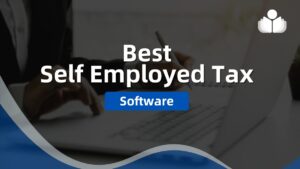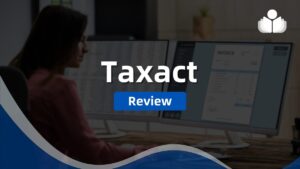© Copyright Carter McNamara, MBA, Ph.D., Authenticity Consulting, LLC.
Applies to for-profits unless otherwise noted.
Sections of This Topic Include
- Description
- Basic Bookkeeping Activities
- Financial Statements
- Financial Analysis
- Financial Reporting
Also, consider
Related Library Topics
Learn More in the Library’s Blogs Related to Financial Management in Businesses
In addition to the articles on this current page, also see the following blogs that have posts related to Financial Management in Businesses. Scan down the blog’s page to see various posts. Also, see the section “Recent Blog Posts” in the sidebar of the blog or click on “Next” near the bottom of a post in the blog. The blog also links to numerous free related resources.
- Library’s Business Planning Blog
- Library’s Building a Business Blog
- Library’s Strategic Planning Blog
Description
The following basic overview will give you some overall perspective on the basic processes involved in financial management in small for-profit businesses in the United States. Key terms to learn are bolded. You’ll learn more about the key terms later in subsequent sections when you return to
The following activities described on this page occur regularly as part of the yearly accounting cycle. The accounting cycle includes bookkeeping, generating financial statements, and analyzing information from the statements.
NOTE: Sole proprietorships do not have boards of directors, whereas corporations do. Therefore, any mention of boards of directors in the following pertains to corporations.
Basic Bookkeeping Activities
Bookkeeping is basically recording various financial transactions. Bookkeeping activities can often by done by someone who’s doing basic clerical work in the business.
Fiscal Policies and Procedures Manual (or Accounting Procedures Manual)
As your business grows, it helps to develop a set of procedures for how your business manages its finances, including how the following activities are carried out by your business. You and your employee will be able to work from the manual to carry out financial management activities. You can also hire a finance professional to review the manual to ensure it’s up to date.
Type of Accounting System and Recording of Financial Transactions
Accounting starts with basic record keeping (or bookkeeping). When your organization is just getting started, your bookkeeping system will probably be based on what’s called a cash-basis accounting system, rather than an accrual-basis system. Many organizations, when starting out, use the cash-basis system and a checkbook to track transactions. In the “memo” portion of the checkbook, they note if the amount depicted on the check is an expense or revenue, and where the amount came from or is going. As your organization grows, you’ll begin using ledgers to track transactions, for example, you’ll post cash receipts to a cash receipts journal and checks you write to a cash disbursements journal.
As your nonprofit grows and as you begin using the accrual method, you’ll likely need more types of journals, for example, a Cash Receipts Journal, Cash Disbursements Journal, Payroll Journal, Accounts Receivable Ledger, Accounts Payable Ledger, Sales Journal, Purchases Journal, and General Ledger.
(In an accrual-basis system, you post entries when you earn the money and when you owe it. Small organizations usually do not have the resources to use an accrual-based system. However, financial statements are prepared on an accrual basis. As a compromise, many organizations use the cash-based basis to record entries in journals, but get help to convert to an accrual-based basis to generate financial statements.)
You can do postings using a single-entry or double-entry method. Double-entry works from a basic accounting equation “assets = liabilities + capital”. The double-entry method makes sure that your books are always in balance. Every transaction has two journal entries, a debit, and a credit. Each transaction affects both sides of the equation.
You’ll post your cash disbursements in a journal of entry. Each posting might refer to accompanying documents that you keep in a file somewhere. For example, postings about cash receipts might refer to invoices that you sent to customers which prompted them to write checks to your business (checks for which you posted cash receipts). For example, postings about cash disbursements might refer to invoices that were sent to your business which prompted you to write checks (checks which you posted as cash disbursements.) When you make a deposit to the bank, you’ll file the bank’s deposit receipt in a file.
Other record-keeping might include posting (probably in an accounts receivable journal) what people owe you (accounts receivable), (and posting in an accounts payable journal) what you owe other people (accounts payable), and posting in another type of journal what assets (inventories, cash, facilities, equipment, etc.) you own. This information will also be used to compute and pay your taxes at the end of the year.
Manual or Automated Accounting System
Your initial record-keeping system will probably be based on a manual system (where you make entries and total them by hand) or you might use a computer system. You might even choose to outsource your record-keeping system to another business that manages your bookkeeping activities (along with other financial management activities) for you.
A computer-based system greatly automates the entry of transactions, updating of ledgers, generation of financial statements and financial analysis (more on these later), and generation of reports needed for filing taxes, etc. The only drawback to using a computer is that you might underestimate the importance of knowing how your accounting processes really work — that’s an advantage of doing the bookkeeping yourself, if only for a few months. You should also generate your own financial statements and financial analysis at least for a couple of months. Having this knowledge and experience helps you develop an instinct for getting the most out of your financial resources.
(We’ll talk more about that back in the topic after we’ve reviewed the rest of the information on this page.)
Accounts and Chart of Accounts
You’ll post each entry according to the category, or account, of the transaction. Each account will be associated with an account number. These numbers are referenced when developing your financial statements (more on those later). You’ll refer to a chart of accounts which will tell you what account number to use when you post an entry. You can design your own chart of accounts, including coming up with your own account numbers. The chart should organize account numbers in the general categories of assets, liabilities, capital, income, and expenses. The account numbers you come up with should depend on the particular kinds of revenues and expenses you expect to have most frequently.
Budgets (Financial Forecasting)
You’ll have an operating budget (or annual budget), which shows planned revenue and expenses, usually for the coming year. Budget amounts are usually divided into major categories, for example, salaries, benefits, computer equipment, office supplies, etc. You might also have a cash budget, which depicts the cash you expect to receive and pay over the near term, for example, a month. You also might have capital budgets, which depict expenses to obtain or develop and operate or maintain major pieces of equipment, for example, buildings, automobiles, computers, furniture, etc. Development of the budgets is usually driven by the chief executive. In the case of corporations, the board treasurer can take a strong role in developing and presenting the budget to the rest of the board. The board is responsible to authorize the yearly budgets.
Usually, each month (after you’ve done trial balancing — more on that later), you’ll update your budget report to include actual revenue and expenses. Then you can compare your planned revenue and expenses to your actual revenue and expenses. This will give you a good idea of whether you operating according to plan or not, including where you need to cut down on expenses and build upon revenue.
Petty Cash
You’ll have a lot of small, recurring expenses that you’ll need to pay right away, for example, to buy a computer power cord, stamps, etc. You’ll probably work from a petty cash fund. You might establish this fund by writing a check to the fund, and noting on the check that it goes to the “petty cash” fund. You’ll withdraw from the fund by filling out a voucher that describes who took the money, how much, for what, and on what date.
Trial Balances
Usually, once a month, you’ll do trial balances. This activity usually starts by totaling the entries from the journal(s) into a general ledger. (As your business grows, you may use other types of ledgers, too, for example for equipment, payroll, etc.) When using double-entry accounting, you’ll add up totals on both sides of the ledger to make sure that total debits equal total credits.
You’ll make sure that the individual postings and totals are correct by comparing each to its accompanying documentation. For example, your recording of cash disbursements will be compared to your bank’s monthly checking statement which indicates what checks you wrote over the month. Your recording of cash disbursements will also be compared to accompanying invoices and other forms of billing to your business, to verify there was a need for each check that was written to pay bills.
Internal Controls
You will have various forms of internal controls to ensure the business is following its plans, minimize the likelihood of mistakes, avoid employee thefts, etc. There is a wide range of internal controls. For example, you’ll be careful about whom you hire. You might have authorization lists about who can access which areas of the building, types of information, etc.
As mentioned above, you’ll carry over totals to various financial reports, including your budget, to see if your financial activities are according to plan or not. To minimize employee theft, the business’s mail will be opened by one person who logs in each check that is received. This person will be someone other than the person who deposits the checks to the bank. Disbursements of large amounts, for example, over $500, may require a secondary signature, for example, from the board treasurer in the case of corporations.
Another form of financial control is an audit. An audit is a comprehensive analysis, by a professional from outside the business, of your financial management procedures and activities. The auditor produces a report, with a variety of supplements, that indicates how well your business is managing its resources. It’s usually good practice to have an audit, whether you’re required to or not.
Financial Statements
In order to know how your business is doing, you’ll do some ongoing financial planning and analysis. In this planning and analysis, you’ll likely use your bookkeeping information to produce various financial statements, including a cash flow statement, and profit and loss (P&L) statement, and a balance sheet.
Your cash flow statement depicts changes in your cash during the year. Your profit and loss statement depicts the changes in your assets over the past year. This statement is particularly useful to tell you if you are operating with extra money or at a deficit. This gives you a pretty good impression of your rate of revenue and spending. It signals areas of concern, as well.
Your balance sheet depicts the overall value of your business at a given time (usually at the end of the year), including reporting your total assets, subtracting your total liabilities, and reporting the resulting net assets. Investors often want to see the balance sheet. You’ll learn a lot more about financial statements, including examples, later on back in the topic All About Financial Management in For-Profits.
Financial Analysis
By themselves, numbers usually don’t mean much. But when comparing them to certain other numbers, you can learn a lot about how your business is doing. For example, you can compare the planned expenses depicted on your budget to your actual expenses in order to see if your spending is on track.
Another form of comparison is by using ratios. A ratio is a comparison made by mathematically dividing one number by the other. The interpretation of results from various types of comparisons depends on the nature of the business. For example, a wholesale business might have different types and ranges of expenses than a retail business. You’ll learn more about financial analysis back on the topic
All About Financial Management in For-Profits.
Financial Reporting
The types of frequency of reports depend on the nature of the business and its situation. For example, if the business is in some sort of crisis, management, bankers, etc., may require frequent reports of various types.
In the case of corporations, your board typically will require regular financial reports at each board meeting. When your business just gets started, the chief executive might prepare and present financial reports to the board. When the business develops, a board finance committee can be a big help. The committee, led by the board treasurer, ensures that reports are complete and helps present them to other members of the board.
The board may require a cash flow statement, profit and loss statement, and balance sheet at each meeting. They also may request descriptions of finances for upcoming, major initiatives. They may request information prior to filing taxes. They will certainly need to see any results from financial audits. You’ll learn more about financial reporting back on the topic
All About Financial Management in For-Profits.
For the Category of Financial Management (For-Profit):
To round out your knowledge of this Library topic, you may want to review some related topics, available from the link below. Each of the related topics includes free, online resources.
Also, scan the Recommended Books listed below. They have been selected for their relevance and highly practical nature.
 Sections of this topic
Sections of this topic
















